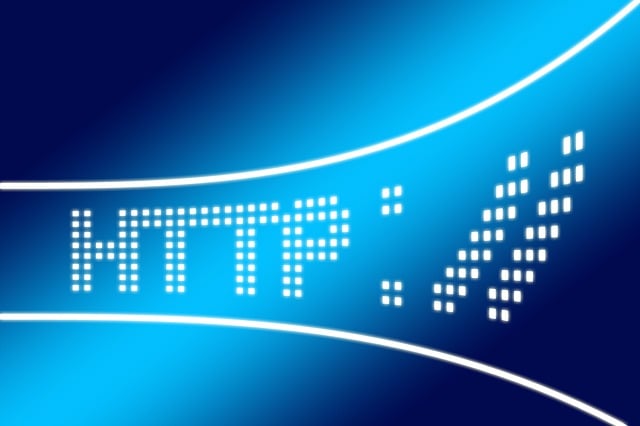HTTP (Hypertext Transfer Protocol) is an application layer protocol that enables communication between clients and servers over the internet.
It is a fundamental building block of the World Wide Web, allowing users to access web pages, send and receive data, and interact with web applications.
HTTP has gone through several iterations, and the latest version, HTTP/3, was released in August 2020.
In this blog post, we will explore what HTTP/3 is, its features, and its potential impact on the web.
Background of HTTP
To understand HTTP/3, it’s important to know about its predecessors.
HTTP/1.0 was the first version of the protocol, and it was released in 1996.
It used a simple request-response model, where clients send requests to servers, and servers respond with data.
However, HTTP/1.0 had some limitations, such as the inability to handle multiple requests simultaneously, slow page loading times, and high latency.
HTTP/1.1 was introduced in 1999 to address these issues.
It added support for persistent connections, allowing multiple requests to be sent over a single connection.
This helped reduce latency and improved page loading times.
It also introduced features such as chunked transfer encoding, which allowed for faster data transfer.
However, as the web continued to evolve, HTTP/1.1 faced new challenges.
The increased use of SSL/TLS encryption, which is used to secure web connections, made it more difficult to establish and maintain connections.
Also, the rise of mobile devices and wireless networks introduced new issues, such as high packet loss rates and network congestion.
To address these issues, a new version of HTTP, called HTTP/2, was released in 2015.
It introduced several new features, including server push, which allowed servers to send data to clients before they requested it.
It also supported multiplexing, which enabled multiple requests to be sent and received over a single connection.
This helped reduce latency and improved page loading times.
Introduction of HTTP/3
HTTP/3 is the latest version of the protocol, and it was officially released in August 2020.
It is also known as “HTTP over QUIC,” which stands for Quick UDP Internet Connections.
QUIC is a new transport protocol developed by Google that is designed to address some of the issues with TCP, the traditional transport protocol used by HTTP.
HTTP/3 aims to improve performance and security while maintaining compatibility with the existing web.
It is designed to work over both HTTP/2 and HTTP/1.1, which means that web servers that support HTTP/3 can serve all clients, regardless of the version of HTTP they use.
Features of HTTP/3
One of the key features of HTTP/3 is its use of QUIC.
Unlike TCP, which is a connection-oriented protocol, QUIC is connectionless, which means that it can establish and maintain connections more quickly.
It also uses UDP (User Datagram Protocol) instead of TCP, which can help reduce latency and improve performance on networks with high packet loss rates.
Another important feature of HTTP/3 is its support for multiplexing.
Like HTTP/2, it allows multiple requests to be sent and received over a single connection.
However, HTTP/3 goes a step further by enabling streams to be multiplexed within a single packet.
This helps reduce latency and improve performance, especially on high-latency networks.
HTTP/3 also includes other features that improve security and privacy.
For example, it uses TLS 1.3 by default, which provides stronger encryption and better protection against attacks.
It also includes “0-RTT,” which allows clients to establish connections more quickly by resuming previous connections.
Potential Impact of HTTP/3
HTTP/3 has the potential to significantly impact the web in several ways.
One of the most significant is its potential to improve performance.
By using QUIC and supporting multiplexing, HTTP/3 can help reduce latency and improve page loading times.
This is particularly important on mobile devices and networks with high packet loss rates, where traditional TCP connections can be slow and unreliable.
Another potential impact of HTTP/3 is its improved security and privacy features.
By using TLS 1.3 and 0-RTT, it can help protect users’ data and prevent attacks.
This is particularly important in today’s world, where cyber threats are on the rise, and users’ data is increasingly at risk.
HTTP/3 also has the potential to simplify web development.
Because it maintains compatibility with existing versions of HTTP, it can be adopted gradually, without requiring significant changes to existing web applications.
This can make it easier for developers to adopt and integrate into their workflows.
However, there are also potential challenges associated with the adoption of HTTP/3.
One of the most significant is compatibility with existing infrastructure.
Because HTTP/3 is a new protocol, web servers and other infrastructure may need to be updated to support it.
This can take time and resources, particularly for smaller organizations and websites.
Another potential challenge is the increased complexity of the protocol.
While HTTP/3’s features can improve performance and security, they also add complexity, which can make it more difficult to diagnose and troubleshoot issues.
This may require additional training and expertise for developers and system administrators.
Conclusion
HTTP/3 is the latest version of the Hypertext Transfer Protocol, and it offers several new features that can improve performance, security, and privacy on the web.
By using QUIC and supporting multiplexing, it can help reduce latency and improve page loading times, particularly on mobile devices and networks with high packet loss rates.
Its improved security features can help protect users’ data and prevent attacks, and its compatibility with existing versions of HTTP can simplify adoption for developers.
However, there are also potential challenges associated with its adoption, such as compatibility with existing infrastructure and increased protocol complexity.
Overall, HTTP/3 represents an important step forward for the web, and its impact will be felt for years to come.
